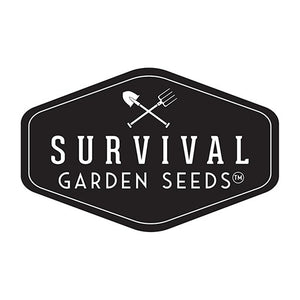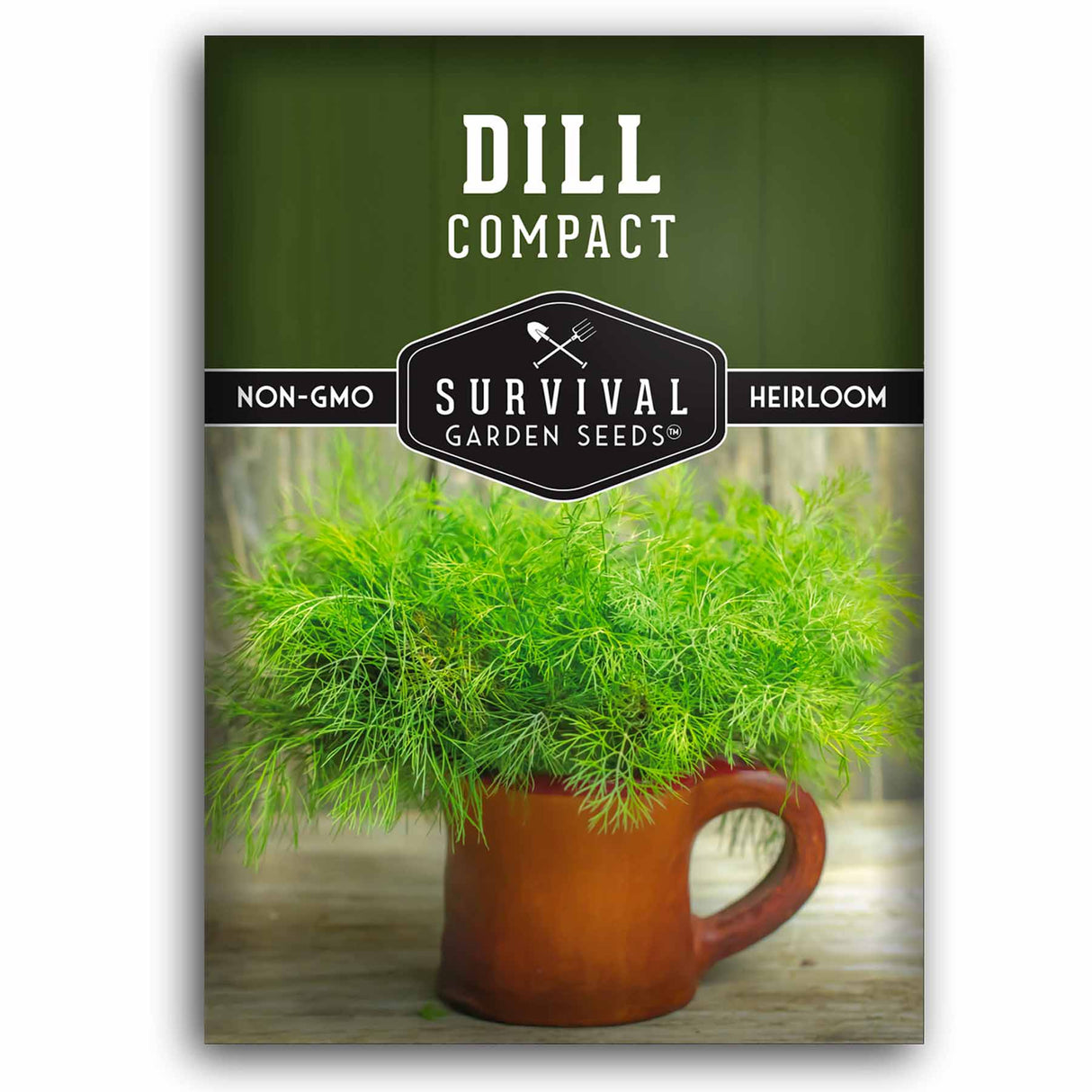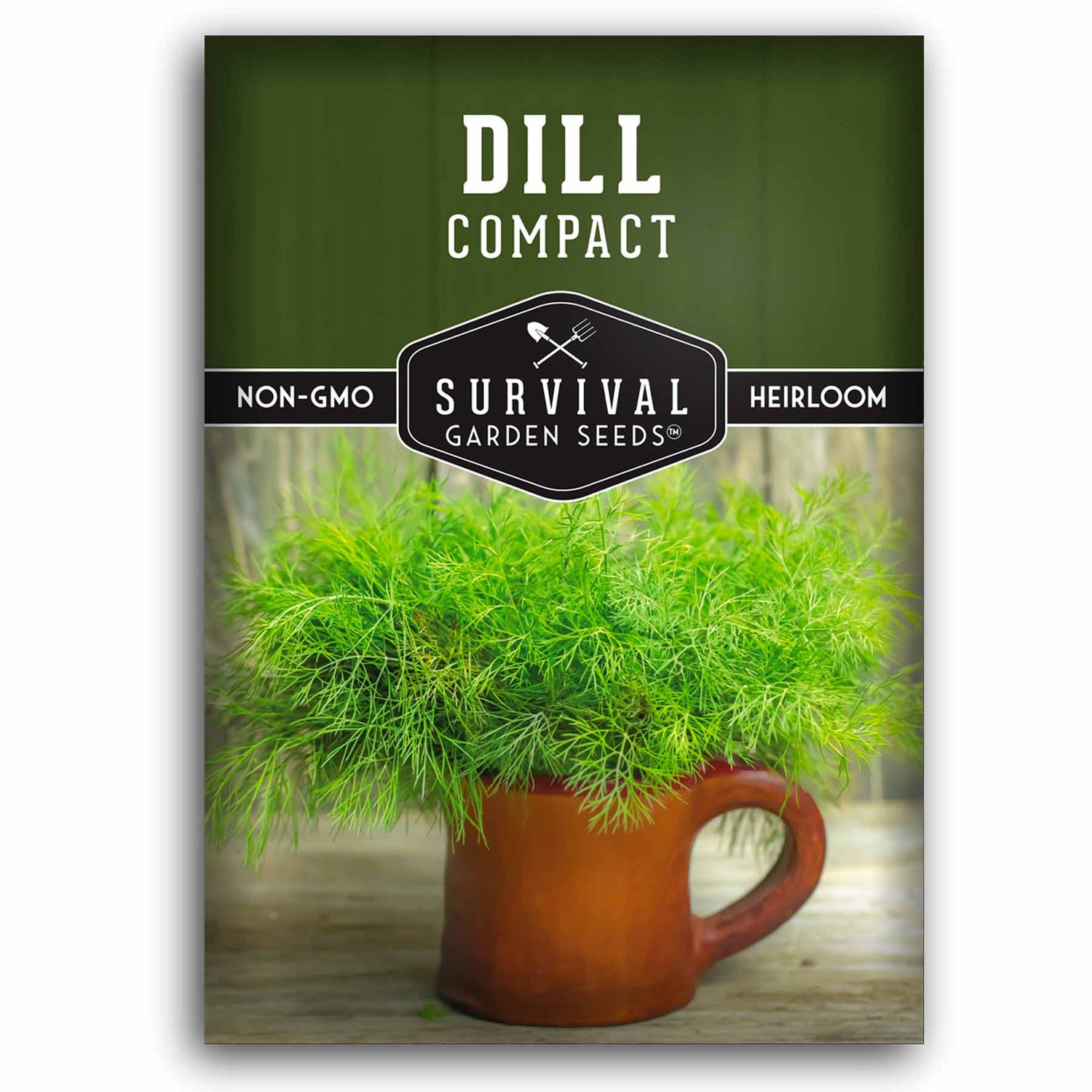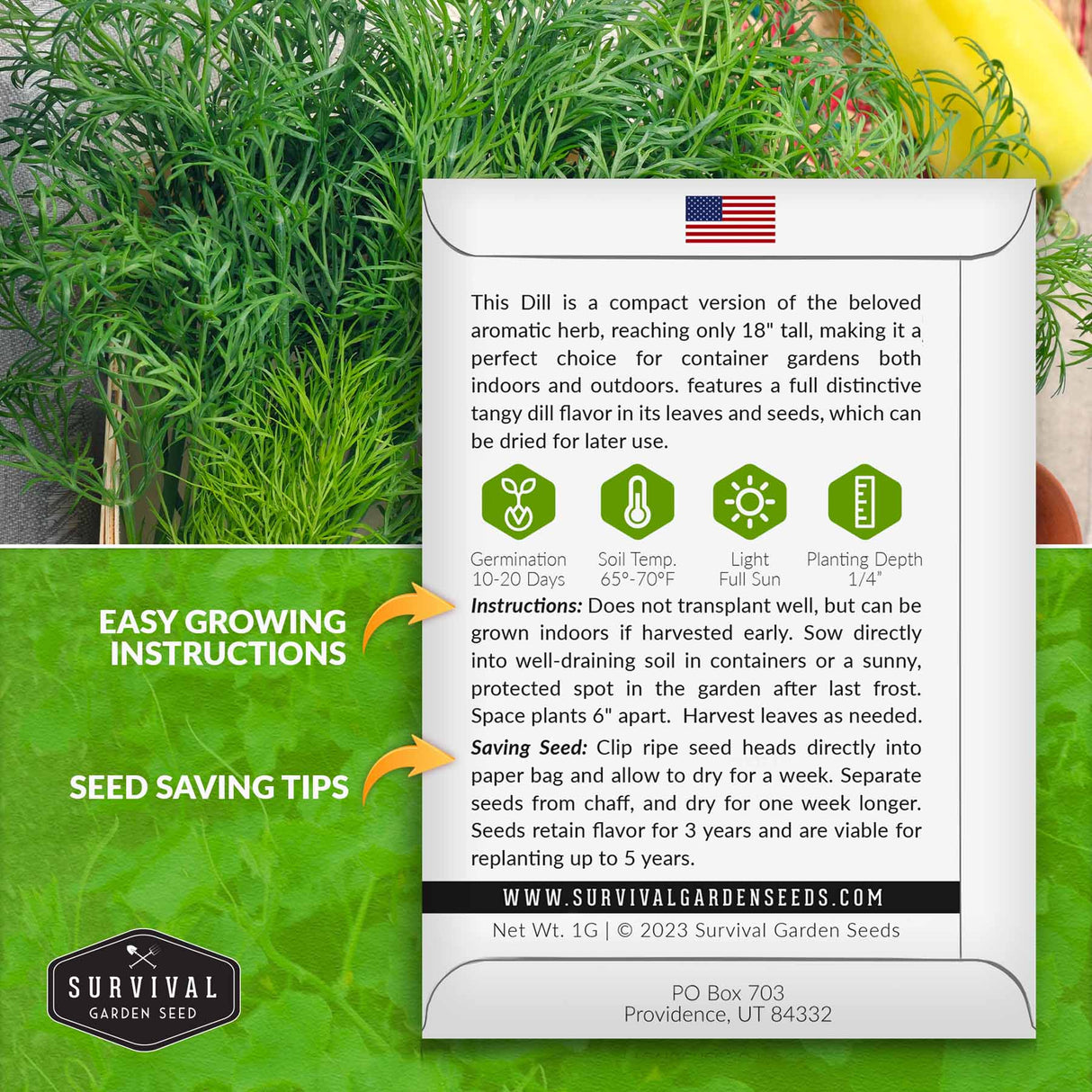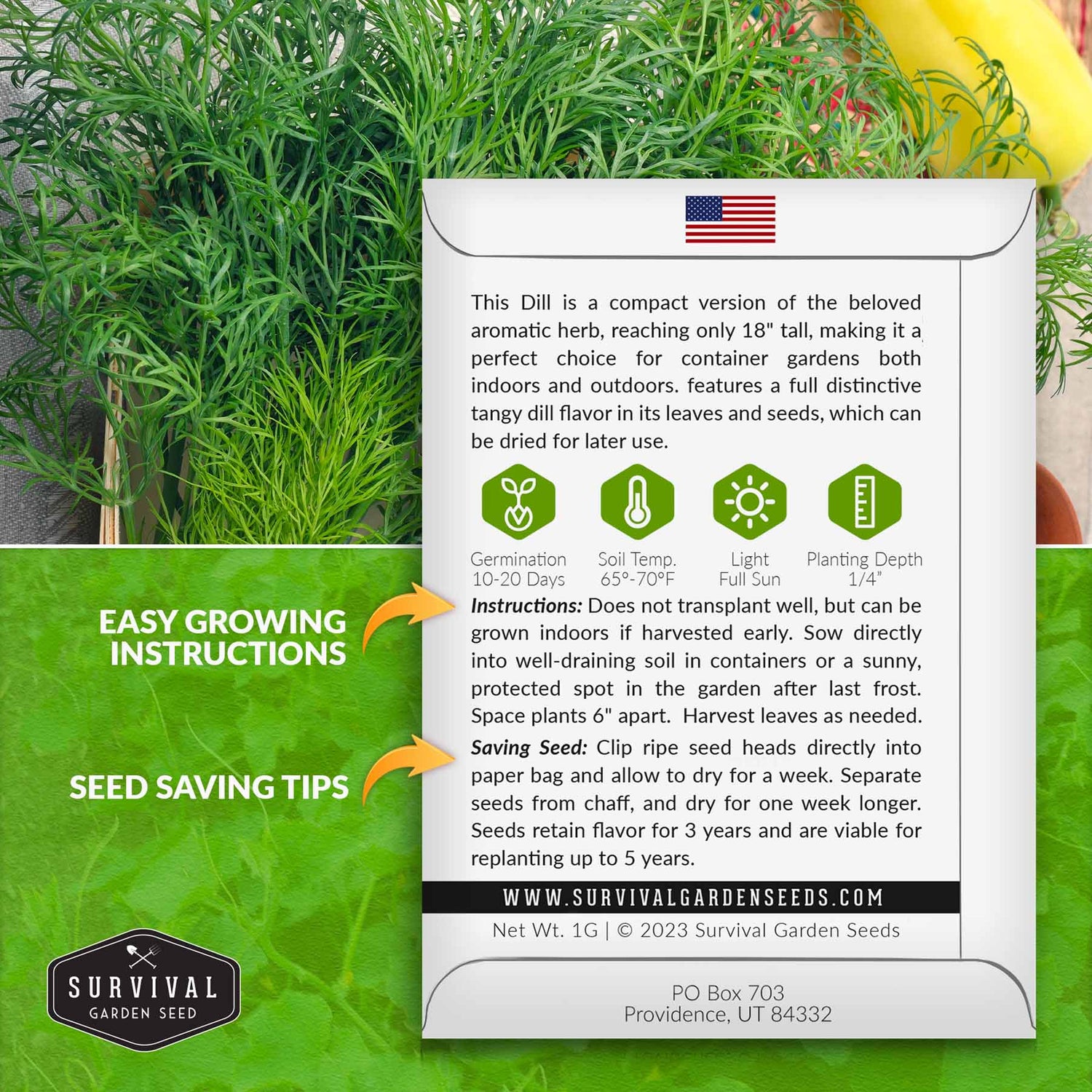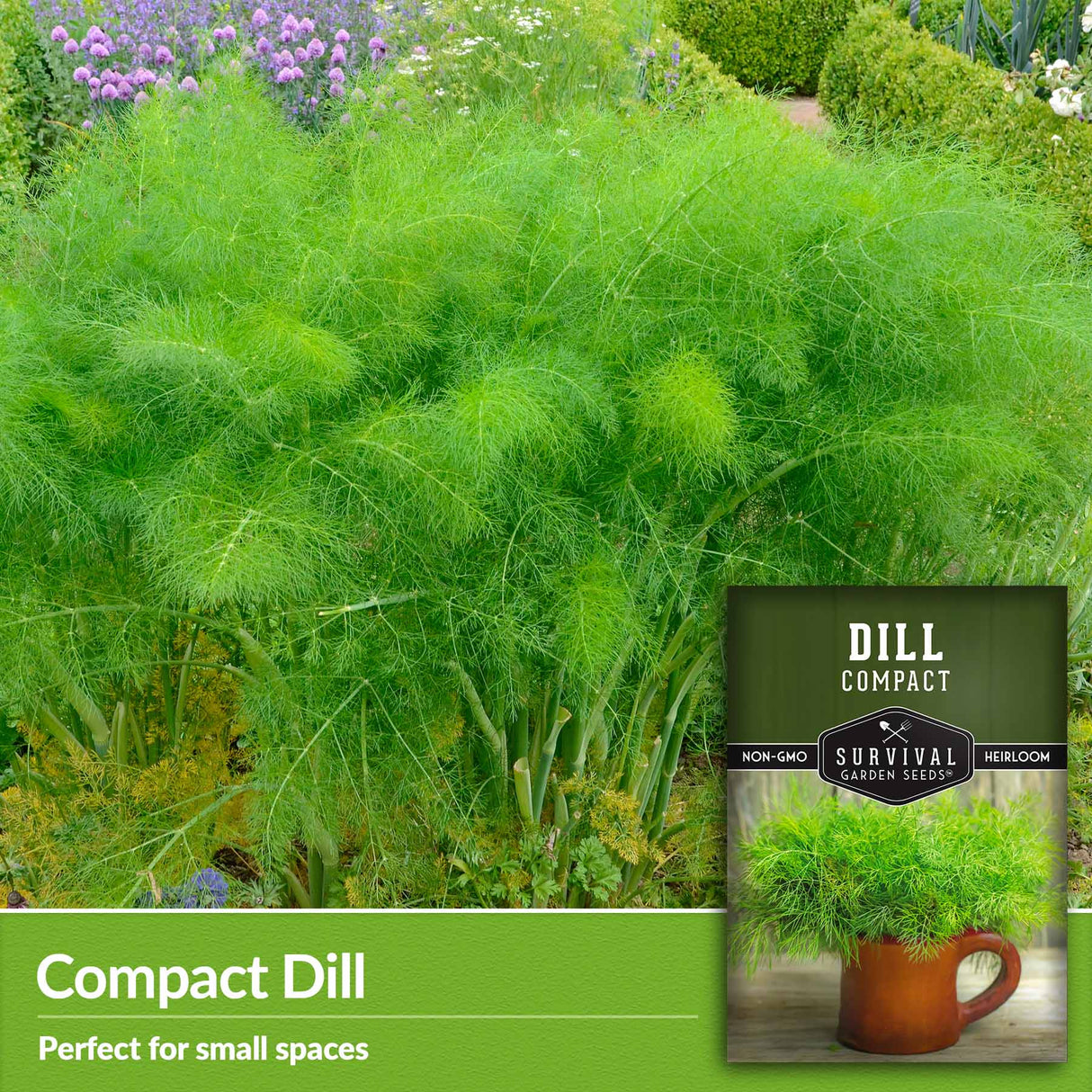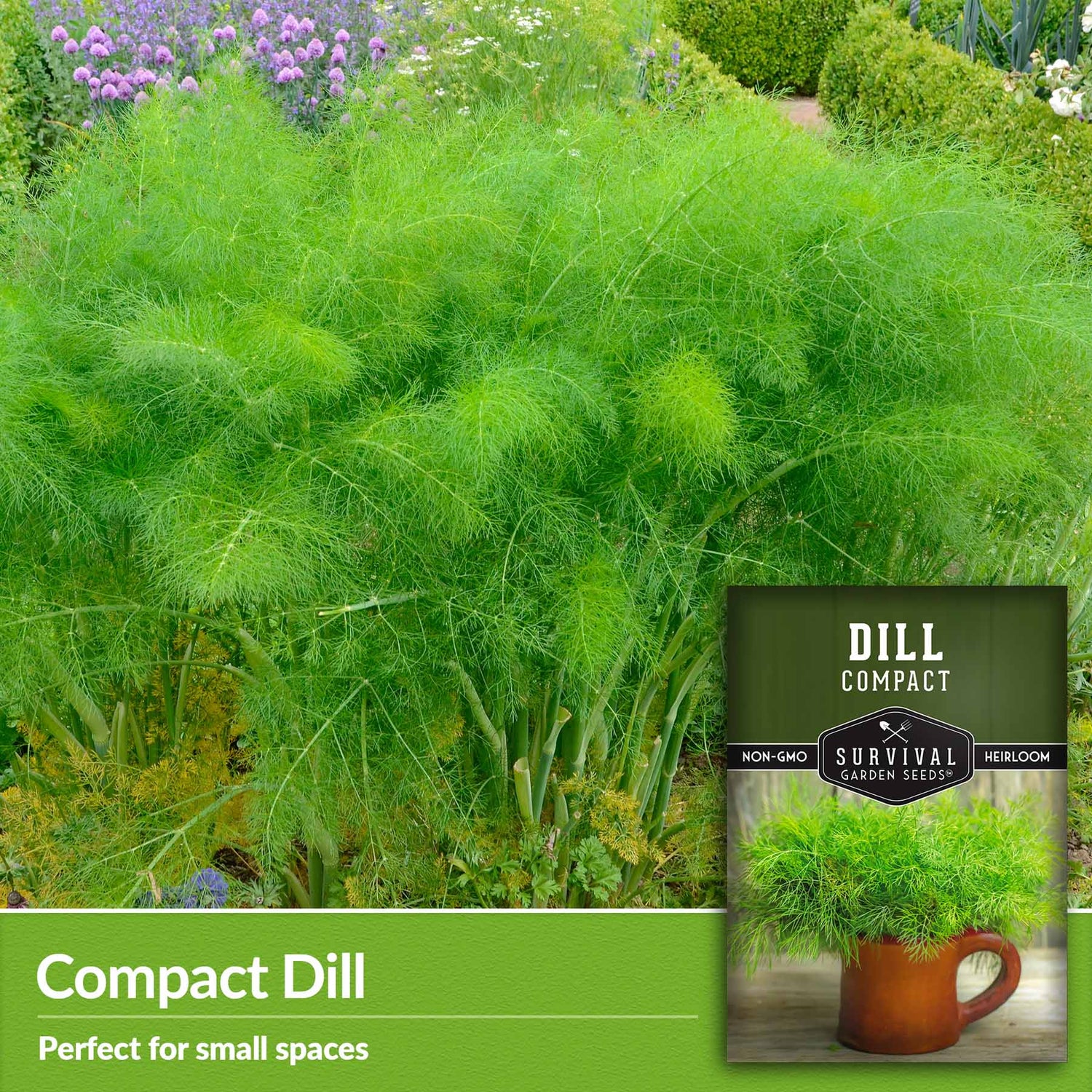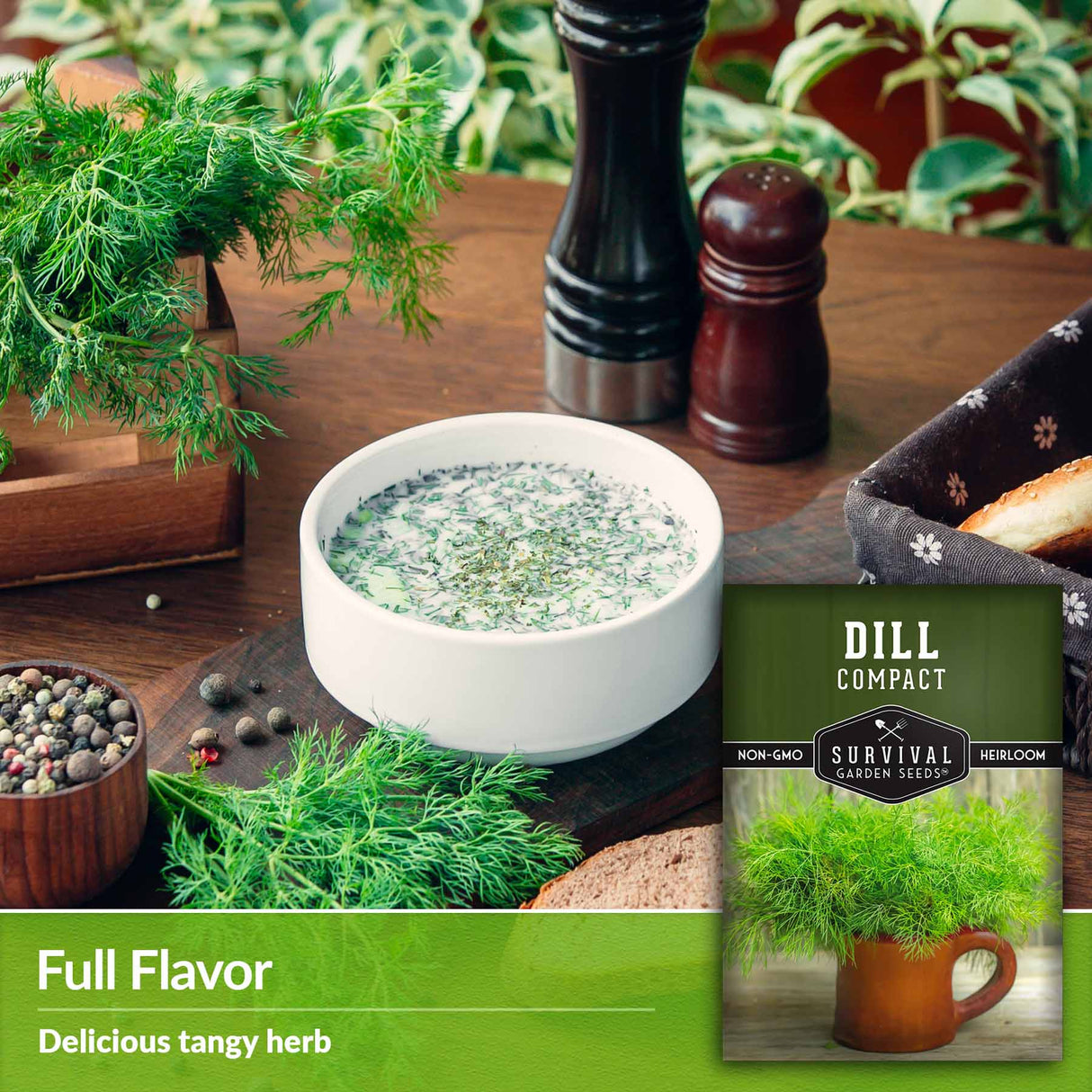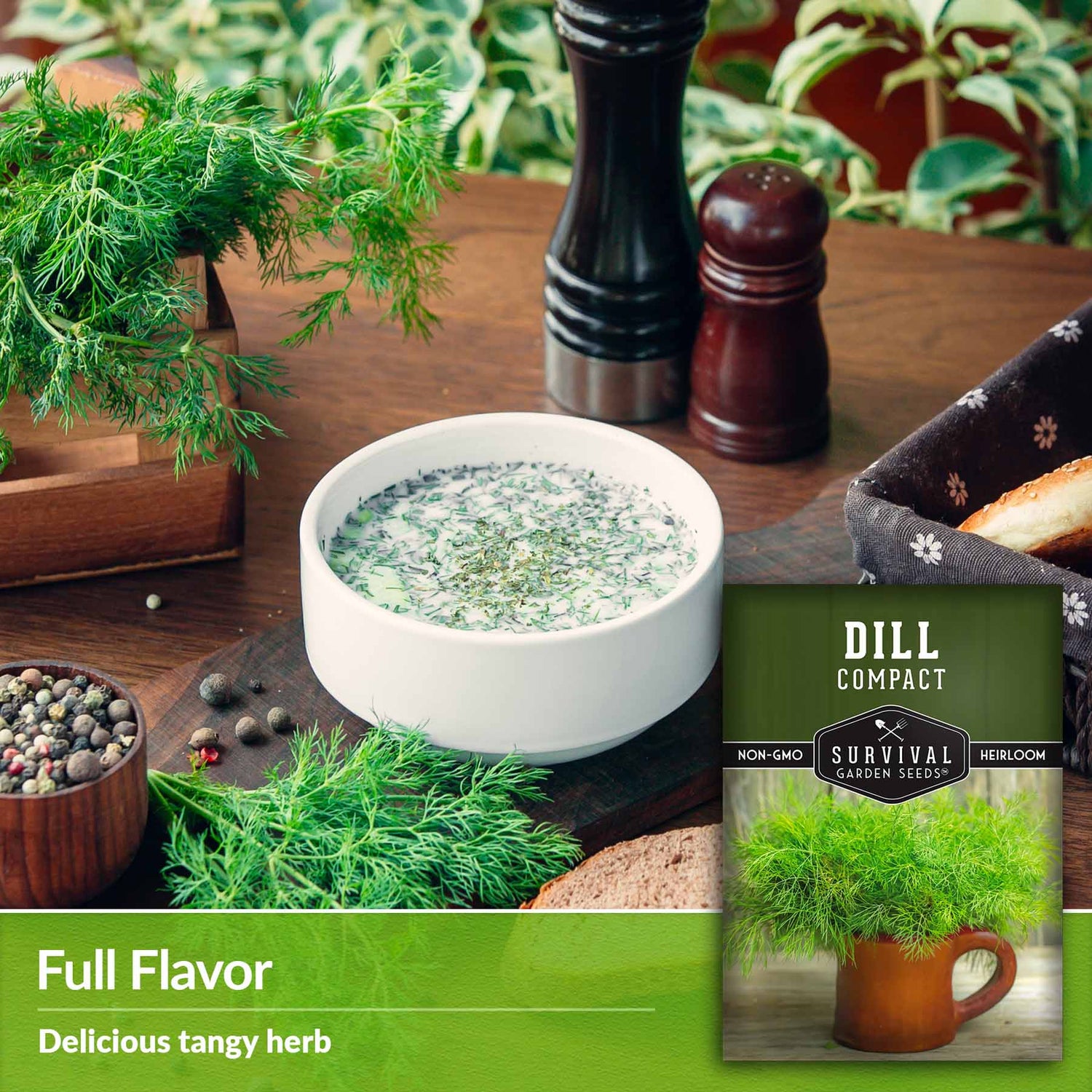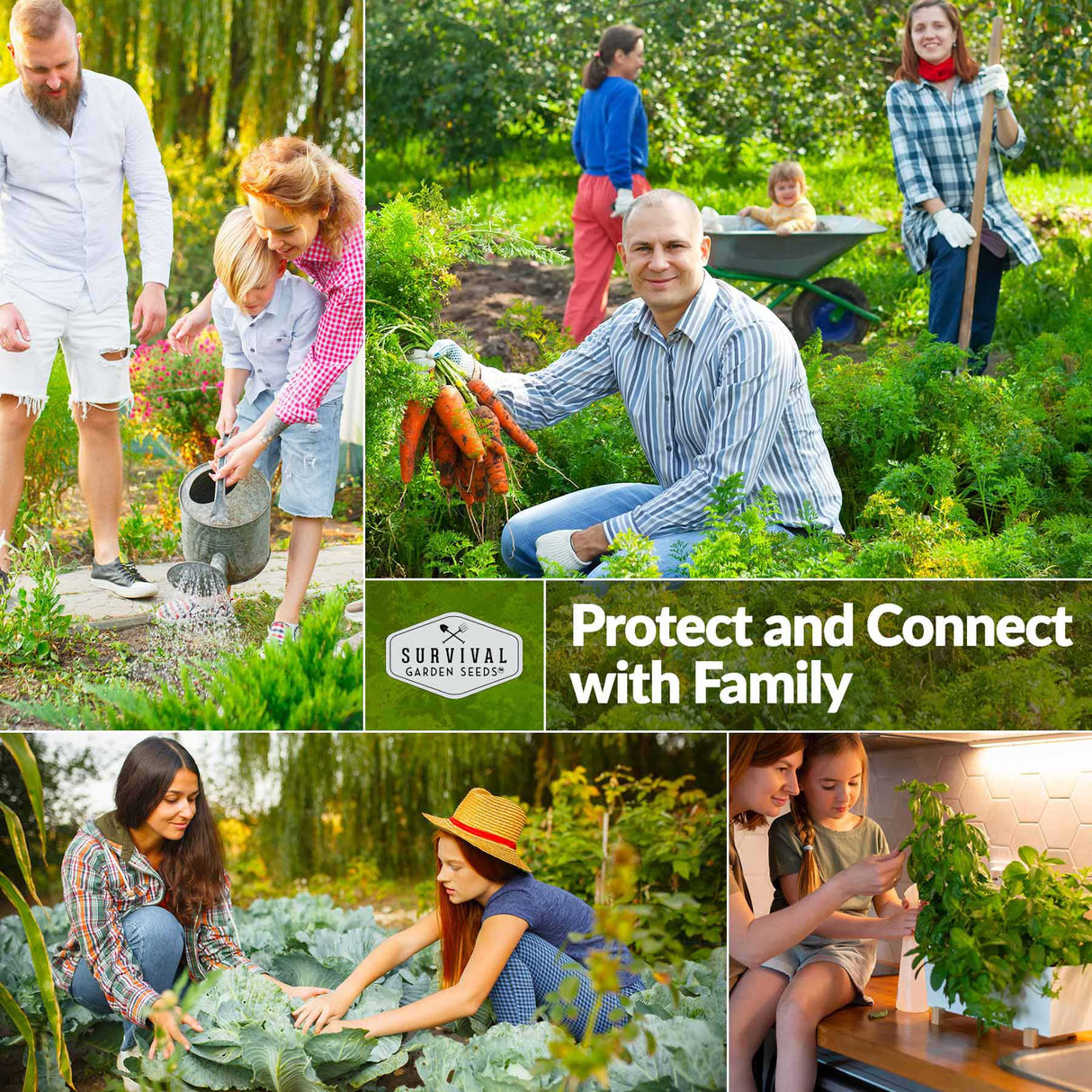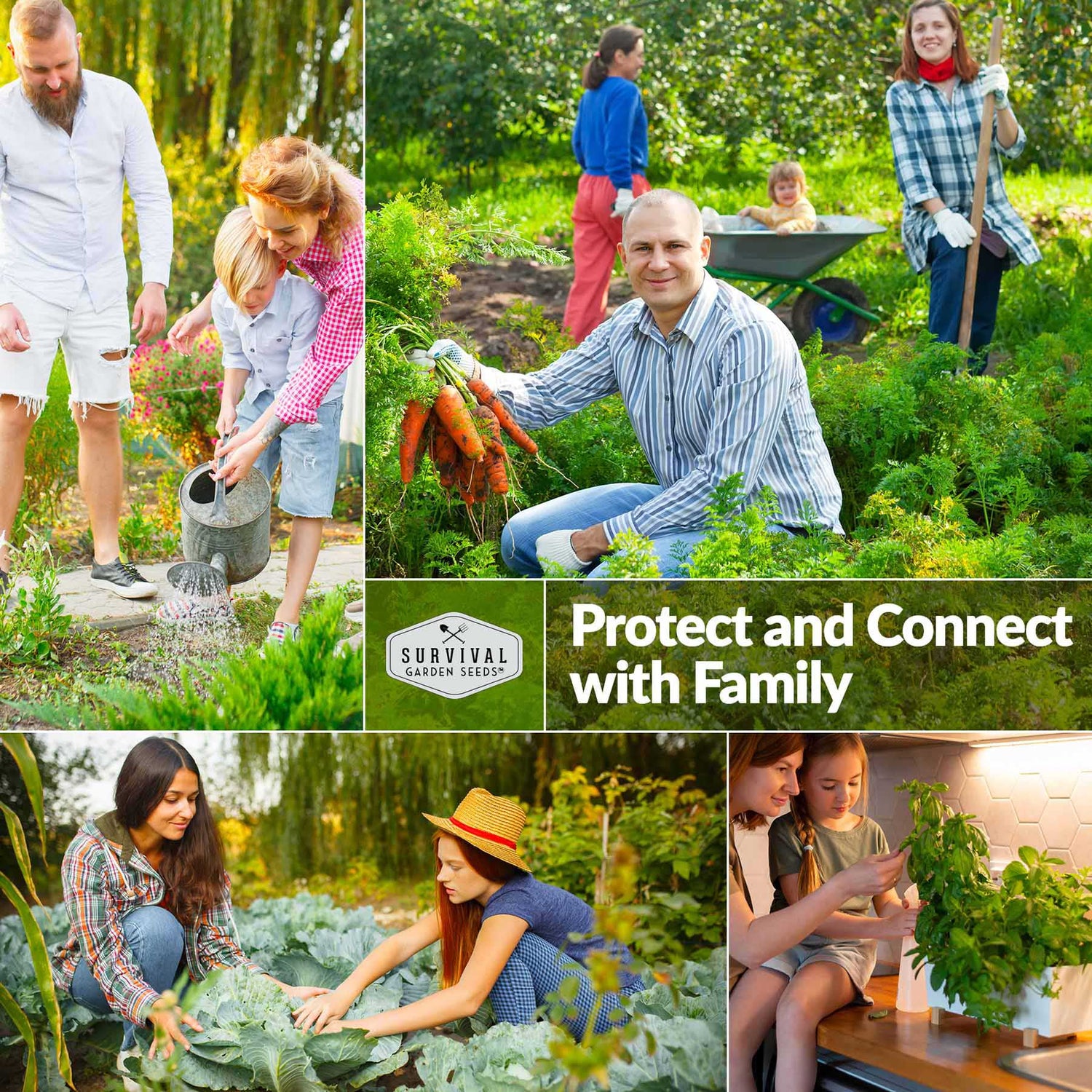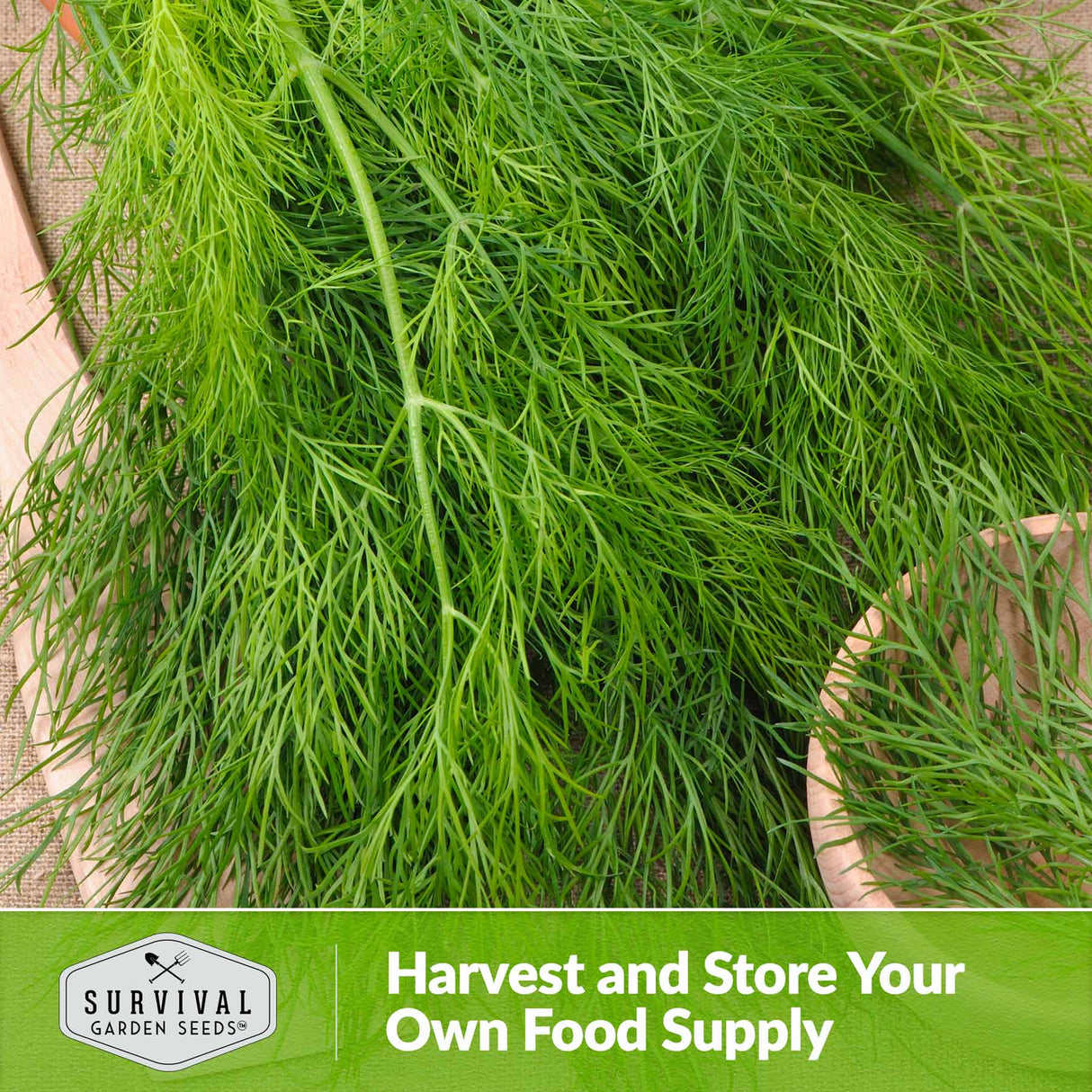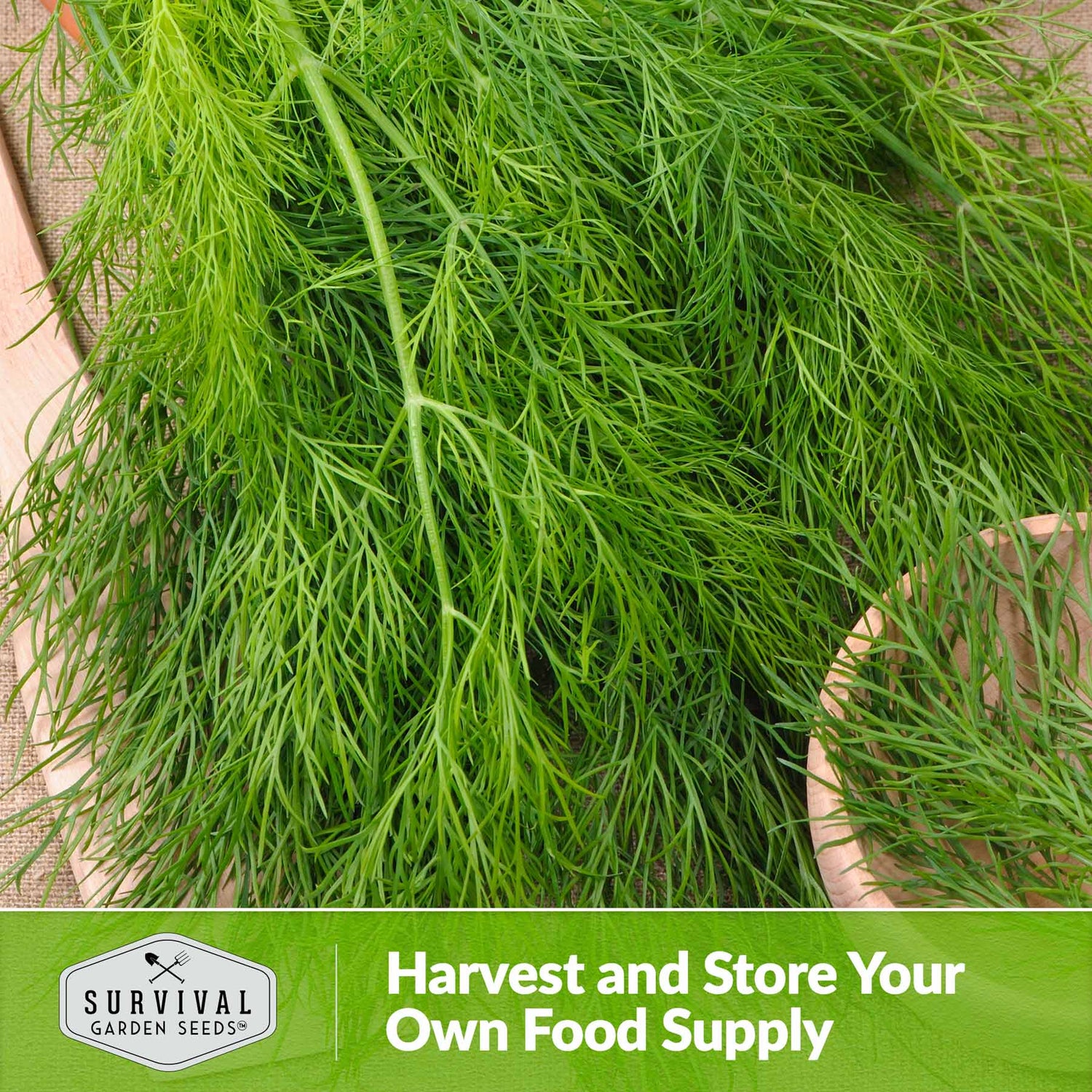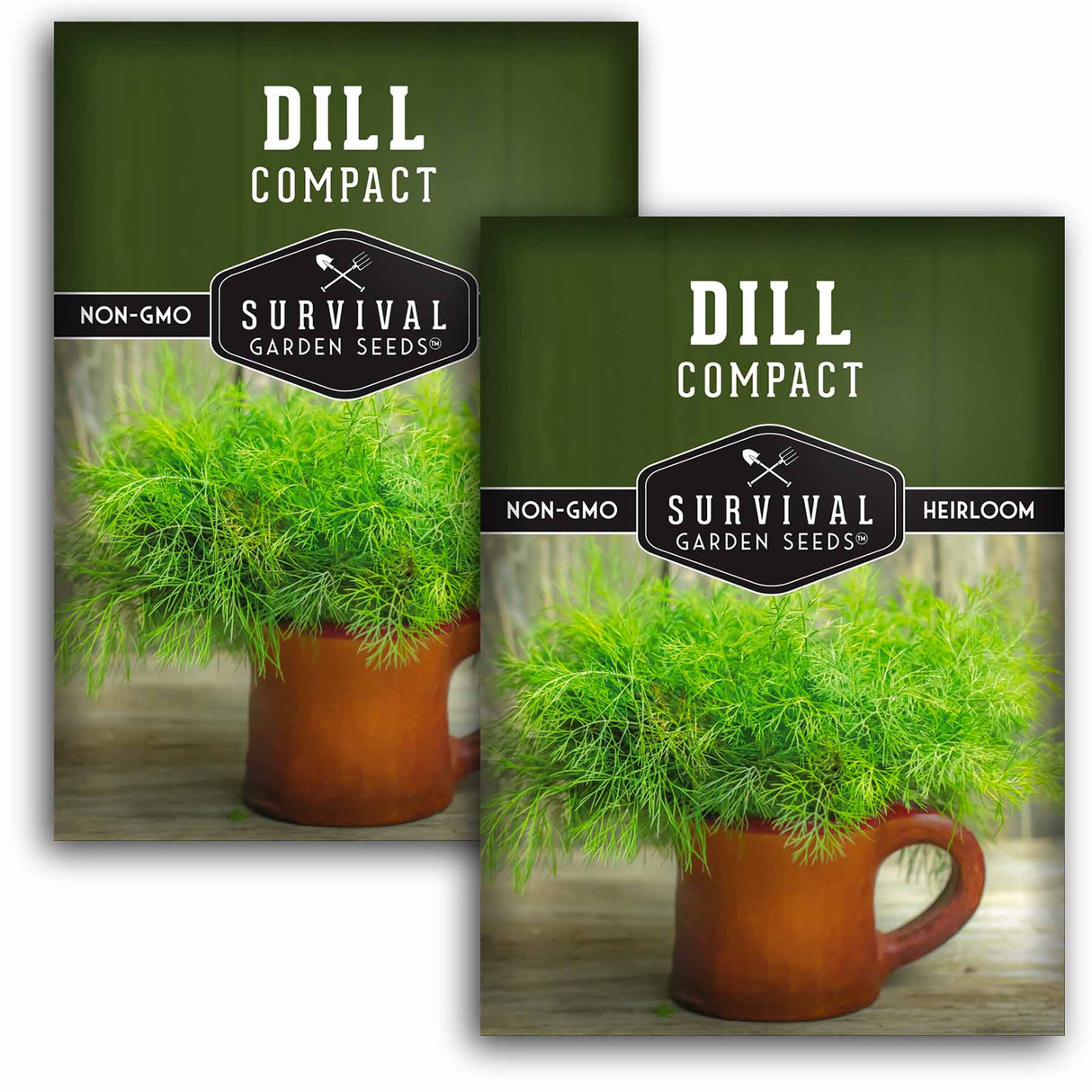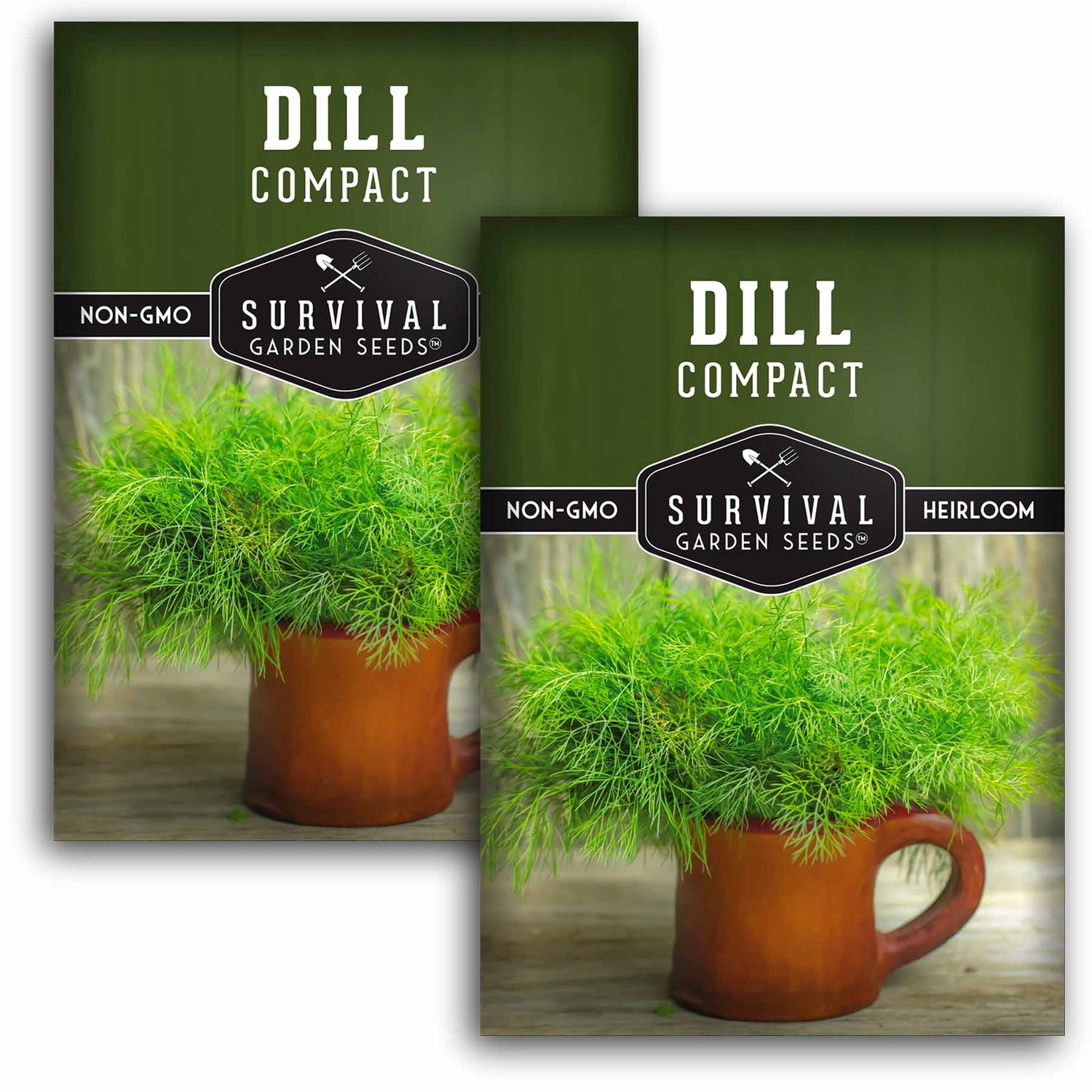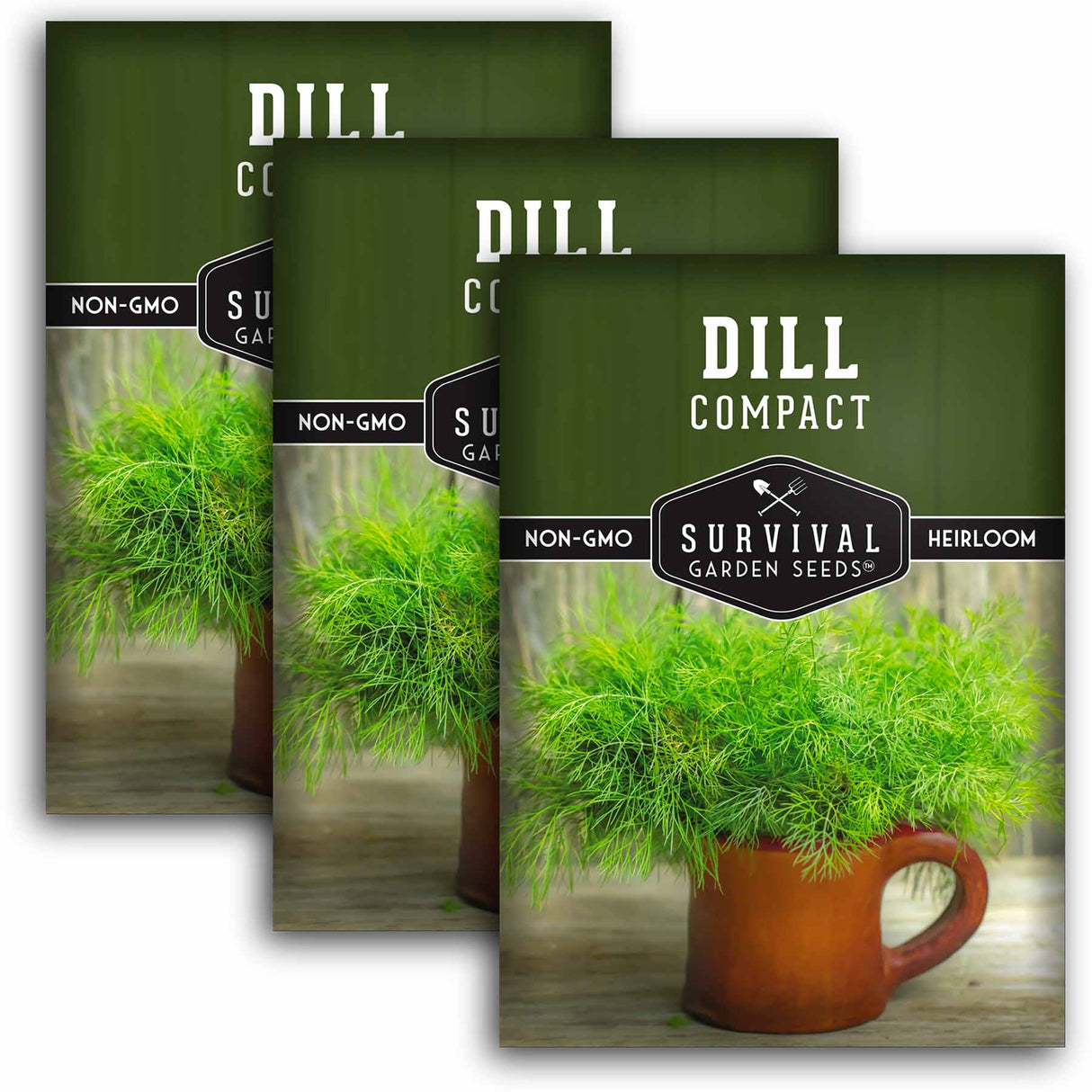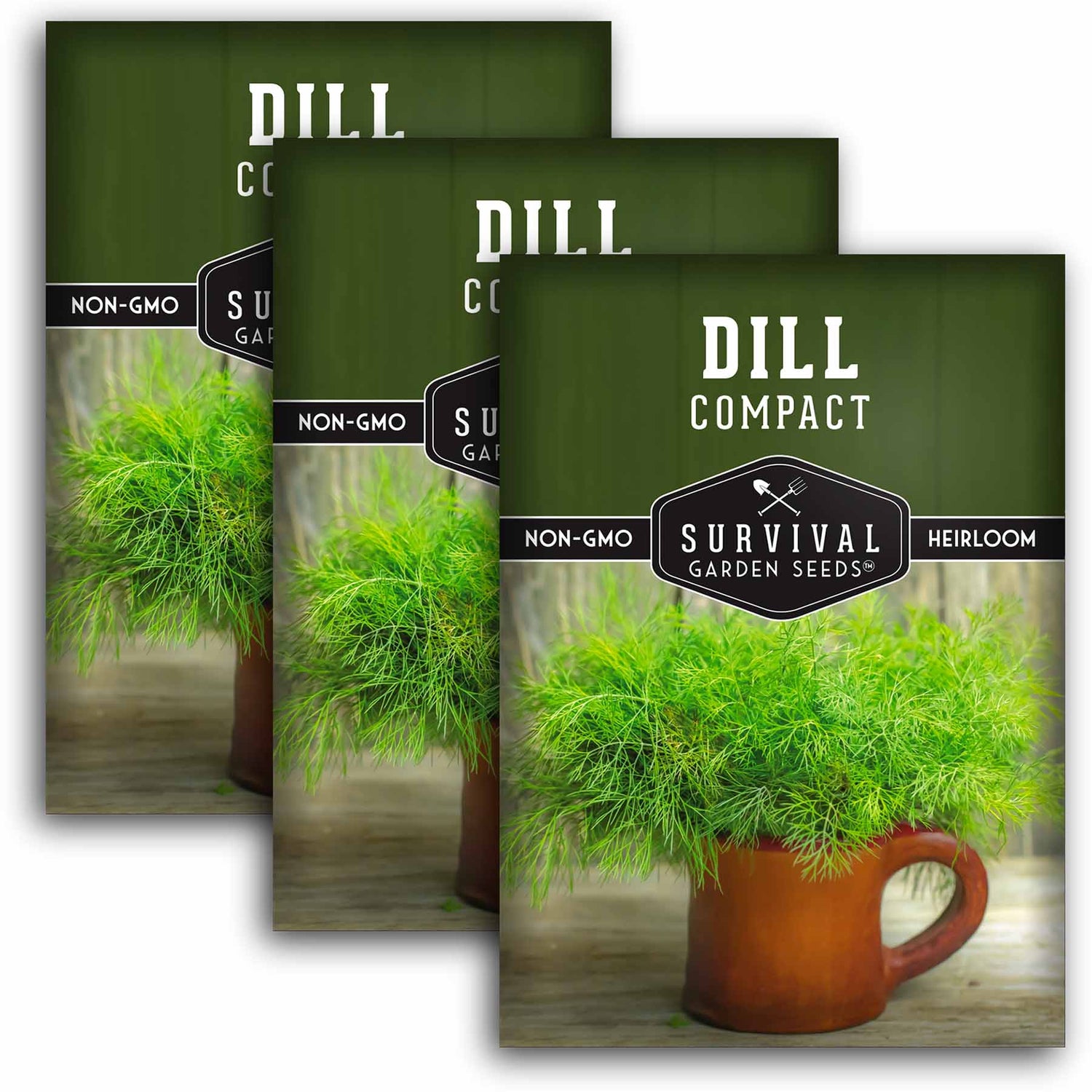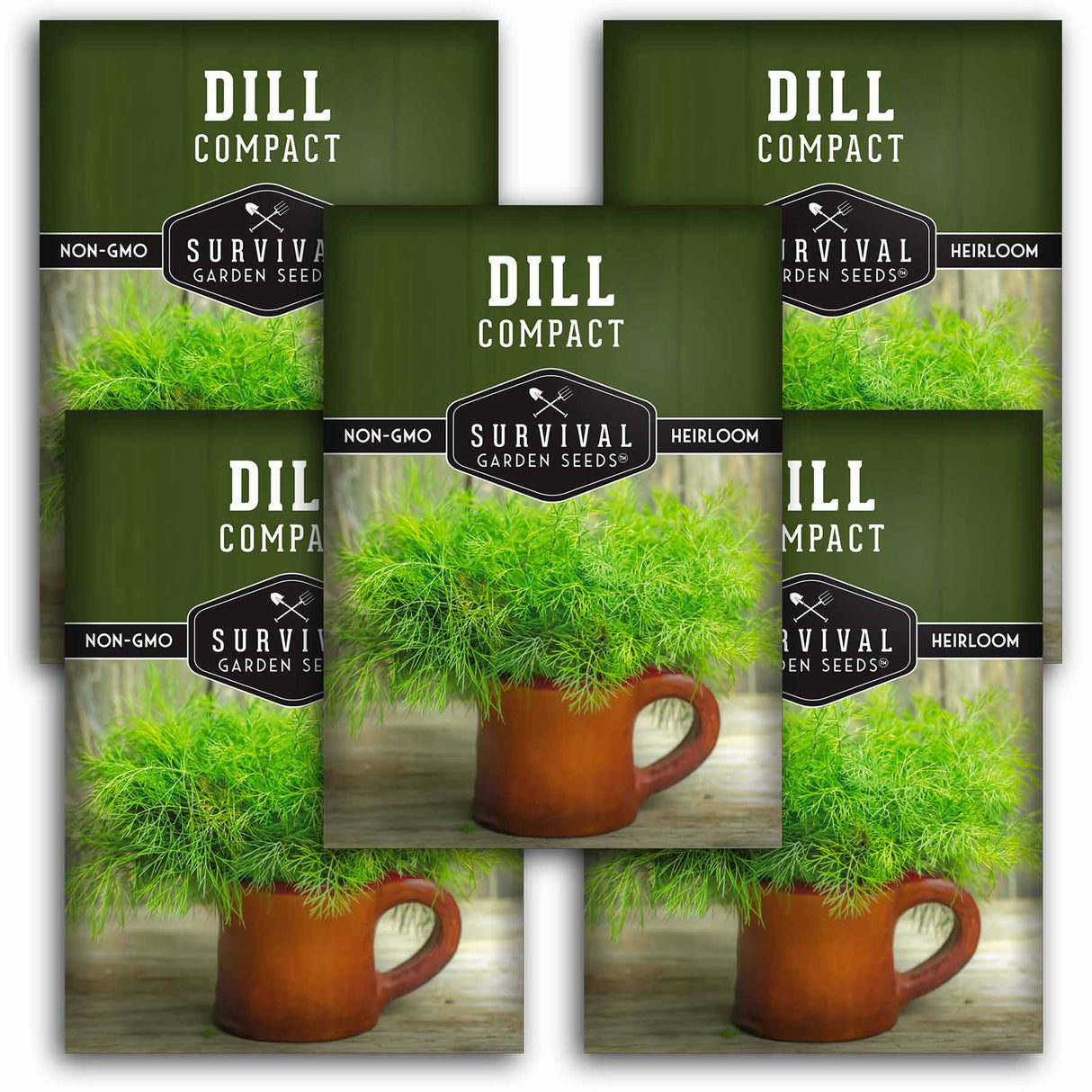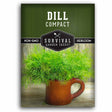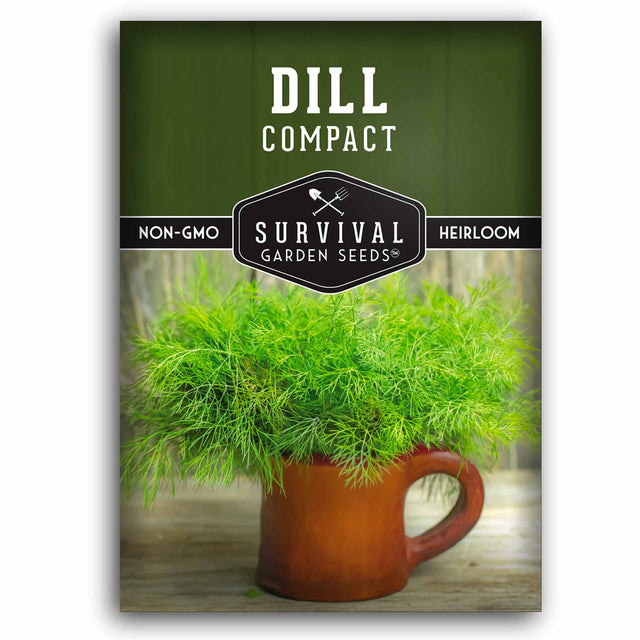Compact Dill Seeds – Dwarf Heirloom Culinary Herb for Containers, Pickling & Small Gardens
Heirloom - Non-GMO - Reliable Germination
Compact Dill Seeds – Dwarf Heirloom Culinary Herb for Containers, Pickling & Small Gardens - 1 Packet is backordered and will ship as soon as it is back in stock.
Couldn't load pickup availability
Compact Dill Seeds (Anethum graveolens) grow into a space-saving, aromatic herb that delivers classic dill flavor without the height of standard varieties. This non-GMO heirloom dill is ideal for gardeners with limited space, thriving in containers, raised beds, patios, and even indoor herb gardens.
The plant produces soft, feathery foliage rich in flavor, along with seeds prized for pickling and seasoning. Compact Dill also produces bright yellow flowers that attract beneficial insects, helping support a healthy and balanced garden ecosystem.
Dwarf Dill for Small-Space Growing:
- Compact growth habit ideal for pots and containers
- Well suited for patios, balconies, raised beds, and indoor growing
- Fern-like foliage adds beauty to edible gardens
Flavorful Leaves and Seeds:
- Fresh leaves perfect for sauces, fish, vegetables, and meats
- Seeds commonly used for pickling and canning cucumbers
- Excellent for yogurt sauces, marinades, and everyday cooking
Why Gardeners Love Compact Dill:
- Big dill flavor in a smaller plant
- Easy to grow indoors or outdoors
- Dual harvest of leaves and seeds
- Attracts beneficial insects with bright yellow flowers
How to Grow Compact Dill:
Direct sow seeds after the danger of frost has passed, or sow indoors for container growing. Plant in full sun with well-drained soil. Harvest leaves regularly to encourage fresh growth, and allow seed heads to mature fully for seed collection. Compact Dill prefers minimal transplanting once established.
Net Wt. 1G
Heirloom Herb Seeds
All of our seeds are open-pollinated, non-GMO, heirloom varieties with tested germination rates
Specifications
Specifications
-
Botanical Name
-
Seasonality
-
Planting Zones
-
Light
-
Soil Temp for Germination
-
Germination Time
-
Planting Depth
-
Plant Size
-
Days to Bloom or Harvest
-
Growing Instructions
-
Seed Saving Instructions
-
Seed Count (approximate)
Payment & Security
Your payment information is processed securely. We do not store credit card details nor have access to your credit card information.
Why Choose Survival Garden Seeds
At Survival Garden Seeds, we believe in preparing today for tomorrow’s peace of mind. That’s why we offer only heirloom, non-GMO, and untreated seeds you can trust to nourish your family and support a sustainable lifestyle. As a family-owned American company, we’re committed to providing seeds that grow strong and true—helping you cultivate health, resilience, and beauty in your garden.
Frequently Asked Questions
Are your seeds heirloom and open-pollinated?
Are your seeds heirloom and open-pollinated?
Yes. All of our seeds are heirloom, open-pollinated varieties, which means they can produce seeds that grow true to type and are suitable for seed saving.
You can learn more about open-pollinated, heirloom, and non-GMO seeds in our Survival Garden Training blog.
Are your seeds non-GMO?
Are your seeds non-GMO?
Yes. All Survival Garden Seeds are 100% non-GMO. Our seeds are open-pollinated heirloom varieties and are never genetically modified.
Are your seeds treated with chemicals?
Are your seeds treated with chemicals?
No. Our seeds are completely untreated and free from chemical coatings, fungicides, or synthetic treatments.
How do I know my seeds are fresh?
How do I know my seeds are fresh?
Every seed packet includes a packed-for date, and we germination-test each seed lot before packaging to ensure high viability.
What is the shelf life of your seeds?
What is the shelf life of your seeds?
Most seeds remain viable for 3 to 5 years or longer when stored properly in a cool, dry place away from light and moisture.
In what USDA hardiness zones can I grow your seeds?
In what USDA hardiness zones can I grow your seeds?
Our varieties are selected to grow successfully across USDA Hardiness Zones 3 through 10. Each packet includes variety-specific planting guidance and germination tips.
